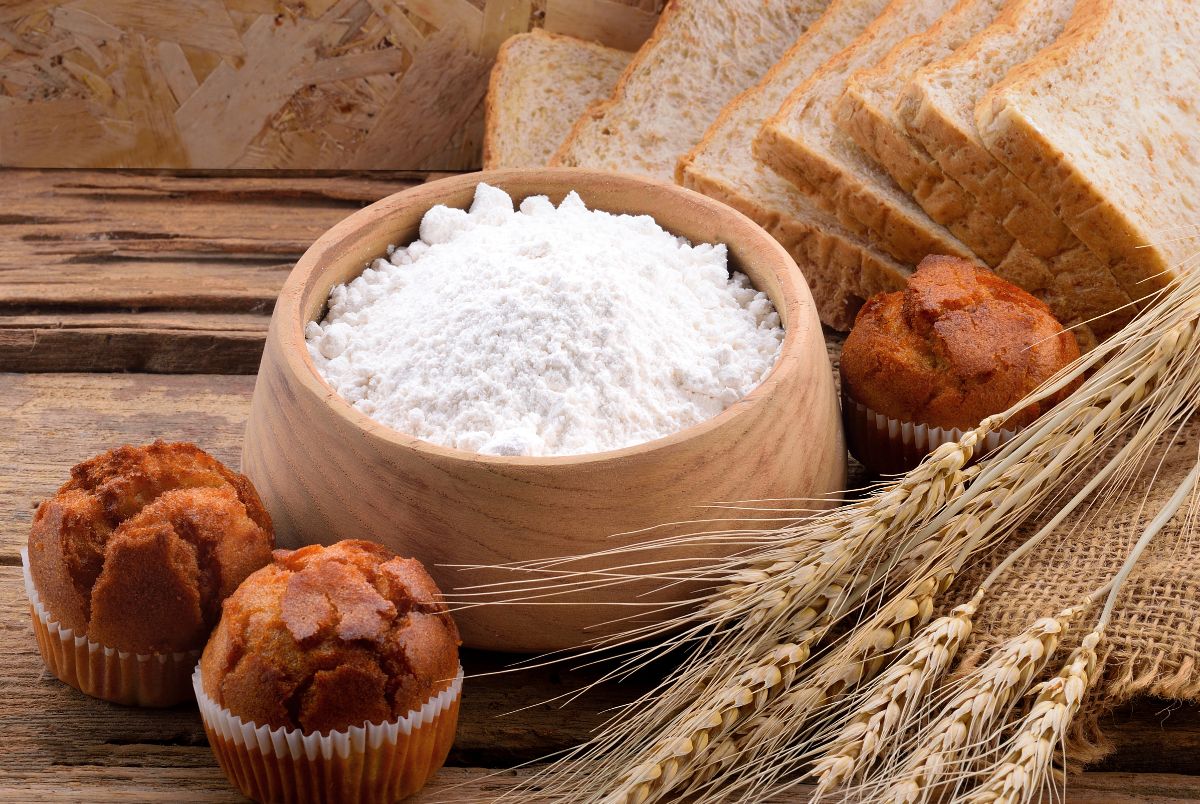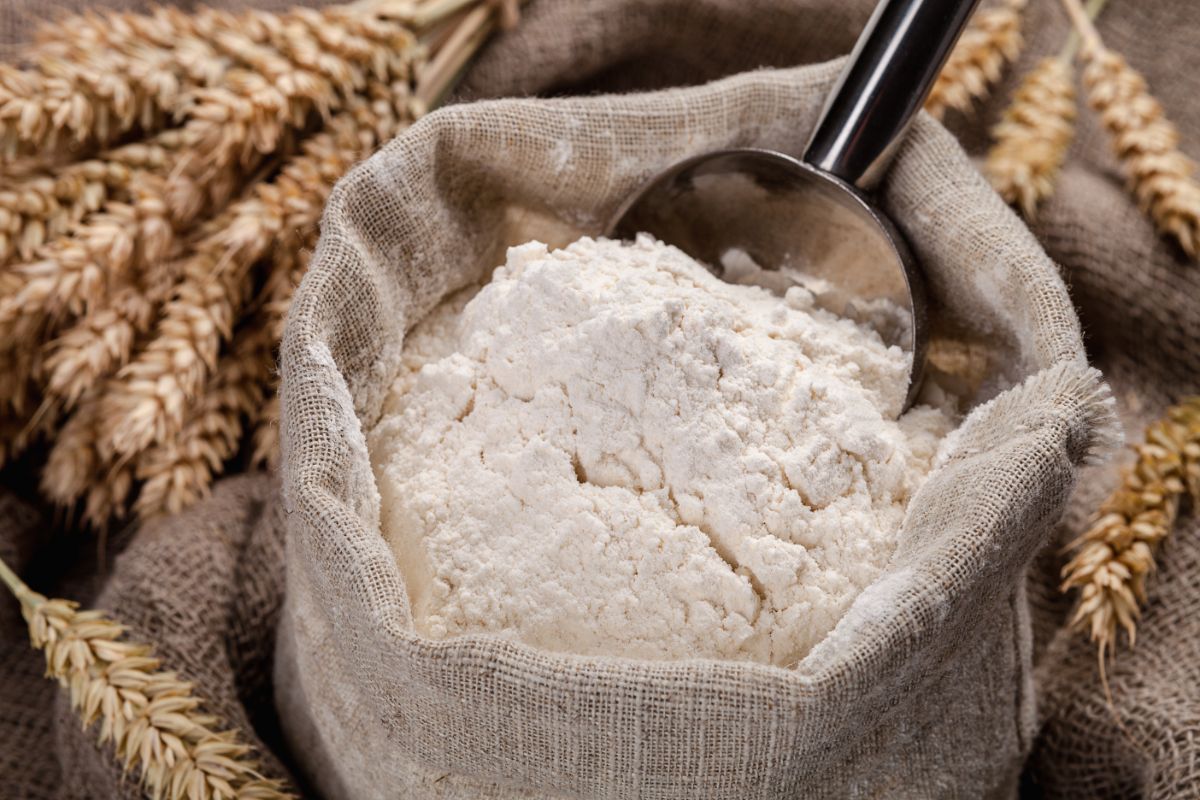Cereal used to be considered the basis of civilization. This is why the gift of grain was considered necessary for civilization to exist. Modern society has tarred white flour as evil incarnate, a nearly toxic substance.

It has led many to declare themselves gluten-intolerant, far more than would be explained by the known rate of celiac disease. Others have sworn off white flour in favor of whole grains or even ancient grains.
Yet we were eating white bread in mass a hundred years ago without ill effect. The question is: is white flour bad for you?
Why do we think white flour is bad for us?
White flour tastes good because many of the things that make us healthy have been removed from it. We’ve stripped out the fiber, though this slowed the absorption of the starches and sugars in the bread.
It is sweeter and smoother, and it is a higher calorie. That’s why we prefer it. And that’s why in excess it is bad for us. When we eat it, it is transformed into energy almost immediately. That contributes to blood sugar spikes and may be why we’re developing diabetes at a higher rate than our ancestors.
When you eat the white flour, your body absorbs the refined carbohydrates readily, causing a blood sugar roller coaster. This may contribute to obesity, too, as the blood sugar swings leave us alternately hungry and tired.
The lack of fiber prevents the healthy volume of food from filling us up, leaving us at risk of eating too much. That’s one theory as to why the shift to white flour and processed foods led to our obesity epidemic.
Refined flour may be bleached or bromated.
These chemicals may not be good for you. However, not all white flour and refined flour have undergone these processes. Unbleached refined flour isn’t necessarily bad for you. It is simply an empty food that isn’t as nutritious as the alternatives.
Is the problem white flour?
Note that this is not just an issue with white flour. The same criticisms are levied at white rice and white sugar. That’s why a number of diets ban these foods as well as potatoes. Furthermore, gluten-free flour isn’t free of these same issues.
For example, white rice flour, tapioca starch, and corn starch may be as refined as white flour. In the case of gluten-free cookies and snacks, it may be as high in sugar as the traditional alternative.
How can you make white flour healthier?
One option is changing how you consume wheat products. For example, wheat berries take more time to absorb than white bread you’ve eaten. The kernels take longer to digest. Another option is using whole grain flour instead of white flour.

The fiber in whole grain means it takes longer to digest. This reduces the rate at which sugar from the bread is absorbed into the body. That is called the “glycemic index”. Adding more fiber to the bread also reduces the calories per serving. In theory, you could get this effect by adding oats and other high-fiber ingredients to your recipe.
You don’t have to use grains that have been milled the old-fashioned way like stone-milled grain. You could get a similar effect by using flour that is course. If you wanted to maximize the health benefits of your bread, use organic sprouted whole grains.
These are hard to find in the store but do exist.
Modern red winter wheat is a high yield and has higher gluten content. That’s why it is the most commonly available type of flour. You could improve the nutritional value of the wheat flour by going for spelt, einkorn, or red fife flour.
You get a healthier flour without having to find a way to grind the grain.
You could add healthier ingredients to the recipe, though this will affect bake times and the yeast’s performance. However, that’s why fruit bread exists. Alternatively, you could bake bread with meat and fruit (without the extra sugar) to create a lovely dish.
However, eating a lot of baked goods heavy on sugar and fat is always going to be bad for you. Just don’t add calorie-free sugar substitutes to the bread mix. You’ll starve the yeast and get flatbread.
Conversely, you’ll make things worse if you add too much sugar unless you’re intentionally creating a dessert. Use healthier oils.
A simple solution is to bake rolls and serve them along with the meal instead of making multiple loaves of bread. Moderate consumption eliminates the concern that you’ll do harm by eating too much. Or offer butter on the side instead of slathering it on the top of the bread consumed by everyone.
What benefits does white flour have?
White flour has folate and iron added to it, providing vital nutrients that are woefully lacking in a modern diet. However, this isn’t necessary if you’re eating a healthy, balanced diet.
Whole grain flours contain enzyme inhibitors like phytic acid. That makes it harder to absorb some vitamins and minerals like calcium. This is why you can’t assume that eating whole grains will necessarily solve all your problems.
What are the benefits of using white flour?
Refined white flour doesn’t require the same work to bake with. Compare that to soaking whole grain flours in buttermilk or soured as is done when making sourdough bread.
You don’t have to remember to feed a starter before you bake, and you don’t have to prepare the bread dough the day before. There are fewer things that can go wrong such as not properly soaking the bread.
You still have to spend a few hours mixing and baking, but it can be done in just one day. You can make biscuits in the afternoon that are ready for dinner. The fact that less can go wrong can take the stress out of baking, making it more likely that you do bake your own bread.
Another benefit of using white flour is that it can help those who have digestion problems. If someone has an upset stomach or irritable bowel syndrome, giving them high fiber bread could cause more trips to the bathroom than they need.
